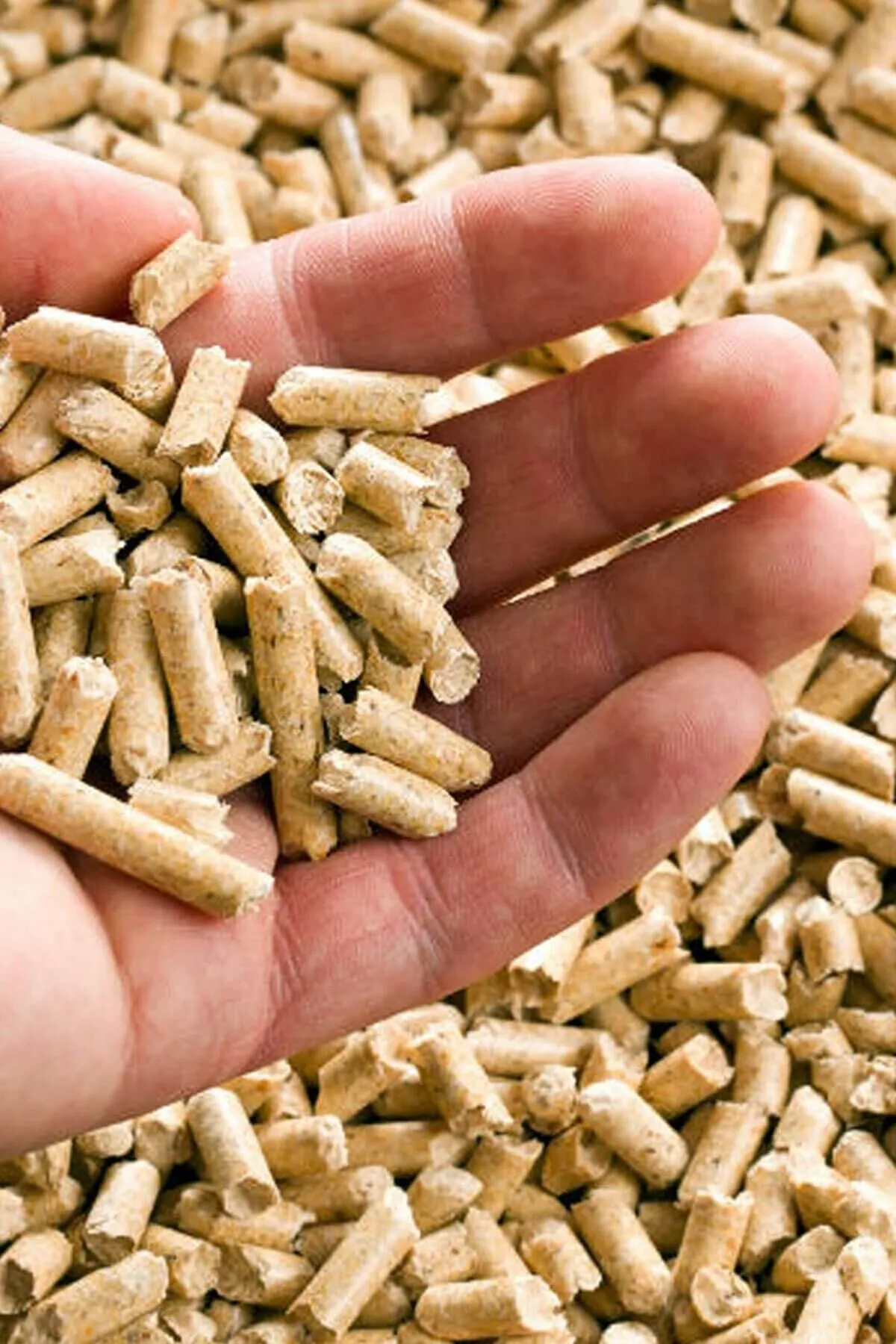What Are Lignosulfonates and Why Are They Used as Binders?
Lignosulfonates are natural, eco-friendly materials that come from lignin, a substance found in the cell walls of plants, especially trees. Think of lignin as the “glue” that holds wood together. During the paper-making process (specifically sulfite pulping), lignin is broken down and chemically modified with sulfite compounds, creating lignosulfonates. These come in forms like sodium lignosulfonate, calcium lignosulfonate, magnesium lignosulfonate, or ammonium lignosulfonate, each with slightly different properties.
As binders, lignosulfonates act like a sticky, natural adhesive that holds particles together to form solid, durable products like pellets, briquettes, or granules. They’re affordable, sustainable, and biodegradable, making them a go-to choice for industries looking to avoid synthetic chemicals. Plus, they’re versatile—used in everything from animal feed to road construction. Imagine them as a natural glue that’s both strong and environmentally kind.
How Do Lignosulfonates Work as Binders?
When lignosulfonates are mixed with water, they form a thick, sticky solution that coats particles (like wood chips, coal dust, or feed ingredients). This stickiness helps particles cling together during processes like pelleting or briquetting. Once the mixture dries, the lignosulfonates harden, creating a solid structure that’s tough enough to handle transportation, storage, or even high heat (like in a furnace).
Here’s why they’re so effective:
- Sticky When Wet: Their chemical structure, full of sulfonate, carboxyl, and hydroxyl groups, makes them cling to surfaces like tiny molecular magnets.
- Hard When Dry: After drying, they form a strong, durable bond that keeps pellets or briquettes intact.
- Water-Friendly: Most lignosulfonates (especially sodium-based ones) dissolve easily in water, making them easy to mix into wet processes.
- Heat-Resistant: They hold up under high temperatures, which is great for things like coal briquettes or ceramic production.
- Eco-Friendly: Since they come from wood, they’re renewable and break down naturally, unlike petroleum-based binders.
Where Are Lignosulfonate Binders Used?
1. Animal Feed Pellets
If you’ve ever seen those uniform pellets in pet food or livestock feed, lignosulfonates might be the unsung hero. They bind ingredients like grains, vitamins, and minerals into solid pellets that don’t crumble during shipping or feeding. This keeps the feed consistent, reduces waste, and makes it easier for animals to eat.
- How It Works: Feed ingredients are mixed with 1-5% lignosulfonate (often sodium or calcium) and water, then pressed through a pellet mill. The lignosulfonate acts like glue, holding everything together while adding a bit of nutritional value (soluble carbohydrates).
- Benefits: Stronger pellets mean less dust, which is better for animals’ lungs and farmers’ wallets. It also saves energy in the pelleting process because lignosulfonates lubricate the machinery.
- Example: A poultry farm using lignosulfonate-bound feed pellets notices fewer broken pellets in the feeder, meaning chickens get a consistent diet, and there’s less cleanup.
2. Coal and Mineral Briquettes
Coal dust or mineral powders can be messy and hard to handle. Lignosulfonates turn these fine particles into solid briquettes for easier transport and use in power plants or steel production.
- How It Works: About 3-5% lignosulfonate is mixed with coal fines and water, then pressed into briquettes. After drying (naturally or at low heat), the briquettes are tough and burn efficiently.
- Benefits: Briquettes reduce dust pollution, improve combustion, and make it easier to store or ship coal. Lignosulfonates also help control dust on coal stockpiles.
- Example: A power plant switches to lignosulfonate-bound coal briquettes and cuts dust emissions by 30%, saving on cleanup costs and improving air quality for workers.
3. Ceramics and Refractory Materials
In ceramics, lignosulfonates help shape clay or other materials into strong, workable forms before they’re fired in a kiln. They’re also used in refractories (heat-resistant materials for furnaces).
- How It Works: A small amount (0.1-2%) of lignosulfonate is added to the clay mix. It improves the “green strength” (before firing) and acts as a lubricant, making it easier to mold or extrude the material.
- Benefits: Stronger, more uniform ceramics with fewer cracks. The lubricant effect also reduces wear on manufacturing equipment.
- Example: A brick factory uses calcium lignosulfonate to produce smoother, stronger bricks, cutting production defects by 15%.
4. Wood-Based Panels (Particleboard, Fiberboard)
Lignosulfonates are a greener alternative to formaldehyde-based glues in wood products like particleboard or medium-density fiberboard (MDF).
- How It Works: Wood chips or fibers are mixed with lignosulfonates and pressed into panels. The binder holds the wood together, creating a sturdy, eco-friendly product.
- Benefits: Reduces reliance on toxic resins, making the panels safer for indoor use (like furniture). It’s also cheaper and more sustainable.
- Example: A furniture maker switches to lignosulfonate-bound particleboard for bookshelves, appealing to eco-conscious customers and lowering production costs.
5. Pelleted Seeds
Farmers love pelleted seeds because they’re easier to plant with precision. Lignosulfonates help create these pellets by binding seed particles into uniform shapes.
- How It Works: Seeds are coated with a lignosulfonate-based mixture, then dried into small, round pellets.
- Benefits: Pellets improve planting accuracy, reduce seed waste, and can enhance germination by holding moisture.
- Example: A vegetable farmer uses lignosulfonate-pelleted carrot seeds, planting them evenly with a machine, which boosts crop yield by 10%.
6. Fertilizer Granules
Lignosulfonates are used to make slow-release fertilizer granules, which deliver nutrients to plants over time.
- How It Works: Fertilizer ingredients (like nitrogen, phosphorus, and potassium) are mixed with 1-3% lignosulfonate, then granulated and dried.
- Benefits: Granules are less likely to wash away in rain, and lignosulfonates can chelate (bind) nutrients, making them more available to plants. They also reduce dust during fertilizer application.
- Example: A cornfield treated with lignosulfonate-bound NPK granules shows better nutrient uptake and less runoff into nearby streams.
7. Road Dust Suppression and Stabilization
Unpaved roads kick up a lot of dust, especially in dry areas. Lignosulfonates are sprayed onto roads to keep dust down and stabilize the surface.
- How It Works: A water-based lignosulfonate solution is sprayed on the road, binding loose dirt and gravel. After drying, it forms a hard, dust-resistant crust.
- Benefits: Reduces dust-related health issues, improves road safety, and lasts longer than chloride-based suppressants in dry climates.
- Example: A rural county applies lignosulfonate to gravel roads, cutting dust complaints from residents by half and saving on road maintenance.
8. Lead-Acid Batteries
In car batteries, lignosulfonates are used to bind the paste that coats the battery’s lead grids.
- How It Works: A small amount of lignosulfonate is added to the paste, improving its adhesion to the grid and enhancing battery performance.
- Benefits: Better charge acceptance and longer battery life, especially in heavy-duty applications.
- Example: A battery manufacturer uses lignosulfonates to improve the lifespan of truck batteries, reducing returns and boosting customer satisfaction.
9. Carbon Black and Other Specialty Uses
Lignosulfonates bind carbon black (used in tires and inks) into pellets, making it easier to handle and process.
- How It Works: Carbon black is mixed with lignosulfonate and water, then pelletized and dried.
- Benefits: Stronger pellets reduce dust and improve handling in tire factories.
- Example: A tire company uses lignosulfonate-bound carbon black, streamlining production and reducing workplace dust exposure.
10. Miscellaneous Uses
- Plywood: Lignosulfonates act as a partial replacement for synthetic adhesives.
- Fiber Glass Insulation: They help bind fibers during manufacturing.
- Concrete Additives: While not a primary binder, lignosulfonates act as plasticizers to improve workability.
Why Choose Lignosulfonate Binders?
Lignosulfonates have some big advantages that make them stand out:
- Cheap and Plentiful: They’re a by-product of paper production, so they’re widely available and cost less than synthetic binders like superplasticizers or petroleum-based glues.
- Green and Safe: They’re non-toxic, biodegradable, and come from renewable wood sources. This makes them ideal for industries like animal feed or agriculture, where safety matters.
- Energy Savers: By lubricating machinery (like pellet mills), they reduce energy use and wear, saving money and extending equipment life.
- Customizable: Different types (sodium, calcium, etc.) can be chosen based on the job. Sodium lignosulfonate is great for water-based systems, while calcium versions offer stronger binding.
Challenges and Limitations
No product is perfect, and lignosulfonates have a few quirks:
- Water Sensitivity: Their solubility in water is great for mixing, but heavy rain can wash them away in applications like road dust suppression. Calcium lignosulfonates are less water-soluble, but not entirely waterproof.
- Inconsistent Molecular Size: Lignosulfonates vary in molecular weight (1,000–140,000 Da for softwood), which can make their performance less predictable than synthetic binders in some cases.
- Not Always a Perfect Fit: For example, in carbon black pelleting, the surface chemistry of carbon black doesn’t always mesh perfectly with lignosulfonates, which can weaken the bond.
- Limited Strength in Some Uses: In high-performance applications like advanced resins, lignosulfonates may not match the strength of synthetic alternatives due to fewer reactive sites.
Despite these challenges, lignosulfonates are often the best choice for cost, sustainability, and ease of use.
How Are Lignosulfonates Used in Practice?
Using lignosulfonates as a binder is pretty straightforward, but it depends on the application. Here’s a general guide:
- Mixing: Add 0.5-5% lignosulfonate by weight to your material (e.g., feed, coal, or clay). Mix with water to create a sticky slurry. The exact amount depends on the material and desired strength—check with suppliers for specifics.
- Forming: Press or extrude the mixture into pellets, briquettes, or other shapes using equipment like a pellet mill or briquette press.
- Drying: Dry the product naturally (air-drying) or with heat (e.g., 150°C for 1-3 hours) to set the binder and achieve low moisture content (usually <7% for briquettes).
- Storage/Use: The final product is ready for transport, storage, or use in furnaces, fields, or factories.
For example, in animal feed production, a farmer might mix 2% sodium lignosulfonate with grain and vitamins, run it through a pellet mill, and dry the pellets to create durable, dust-free feed.
Safety and Environmental Impact
Lignosulfonates are a win for safety and the environment:
- Safe for Animals: They’re approved for animal feed at levels up to 8,000–10,000 mg/kg for species like pigs, chickens, and cattle. However, safe levels for dairy cows and fish (like salmon) are less clear, so always check regulations.
- Eco-Friendly: They break down naturally, so they don’t pollute soil or water. They also contain tiny amounts of metals (like iron or magnesium) from wood, but these are well below EPA safety limits (1 ppm).
- Low Risk: No significant harm to plants, animals, or aquatic life when used properly.
For road dust suppression, lignosulfonates are safer than chloride-based products, which can harm nearby vegetation or waterways.
How to Get Started with Lignosulfonates
If you’re considering lignosulfonates for your project, here’s what to do:
- Identify Your Needs: Are you making animal feed, coal briquettes, or stabilizing a road? Different applications require different lignosulfonate types (e.g., sodium for water solubility, calcium for stronger binding).
- Contact Suppliers: Company like Green Agrochem (www.greenagrochem.com) offer lignosulfonate products tailored to specific industries. They can provide technical data and dosage recommendations.
- Test Small: Start with a small batch to fine-tune the lignosulfonate percentage and mixing process for your material.
- Check Regulations: For food or feed applications, ensure compliance with local safety standards (e.g., FDA or EU guidelines).

